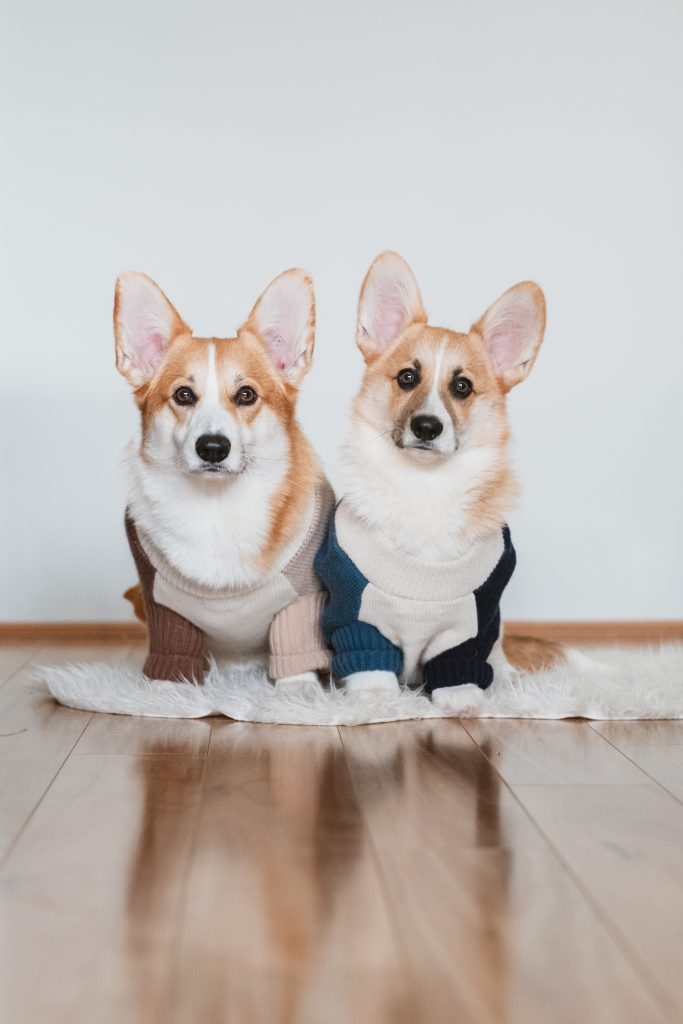Unveiling the Enigmatic Past of Corgis: From Ancient Herding Dogs to Modern Day Favorites
Discover the fascinating history and origins of Corgis, from their early use as herding dogs in Wales to their development as beloved breeds, as well as the folklore and legends surrounding them, and their current popularity and future prospects.
The Historical Significance of Corgis
The historical significance of Corgis is deeply rooted in their origins and the pivotal role they played in Welsh history. Dating back to at least 920 A.D., Corgis were likely used as herding dogs in Wales, showcasing their enduring legacy as a working breed that spans centuries. These dogs were not only valuable to Welsh stockmen for their herding abilities but also for their unwavering loyalty as they guarded and protected cattle herds, making them indispensable companions on the Welsh farms.
The name “Corgi” carries significant meaning that reflects the breed’s unique characteristics. It can mean “cur dog,” “dwarf,” or “working dog,” all of which encapsulate the distinctive traits of these remarkable canines. Their agility, intelligence, and compact stature are encapsulated in these meanings, shedding light on the historical context of the breed and its purpose in Welsh society. This historical relevance serves as a testament to the enduring nature of the Corgi breed and its profound impact on the agricultural landscape of Wales.
The Origin of Corgis
The history of the Corgi breed dates back to at least 920 A.D., where they were likely used as herding dogs in Wales, showcasing their significant heritage as working dogs. Their value to Welsh stockmen was unparalleled, as they exhibited unwavering loyalty, guarding and protecting cattle herds, and returning to the homestead to be loyal companions. The Corgi’s name itself, which means ‘cur dog,’ reflects their nature as hardworking and steadfast animals. Additionally, “Corgi” can also mean a dwarf or working dog, which aptly describes their characteristics and physical attributes.
The Corgi’s role as drover’s dogs before the 1800s is a pivotal aspect of their history. Their ability to work from behind and flank to drive stock forward, unlike Border Collies, made them invaluable assets to stockmen. Their agility and low stature were crucial as they could avoid kicks from cattle, showcasing their adaptability and resilience in a demanding role. Despite the diminishing need for drover’s dogs due to the advent of fencing and railways, the Corgi’s indomitable spirit and character continued to make them indispensable in various capacities, solidifying their historical significance.
The Development of the Corgi Breed
The evolution of the Corgi breed is a fascinating tale that involves the intermingling of various cultures and the breed’s indispensable role in agricultural life. The influence of the Viking invasion and the influx of Flemish weavers in Wales played a significant role in the creation of the Pembroke Welsh Corgi. This crossbreeding led to the development of a breed that possessed exceptional herding abilities and a resilient nature, making them well-suited for the demanding tasks on Welsh farms. In contrast, the Cardigan Welsh Corgi, descended from the Teckel family, faced a slower gain in popularity and was not recognized as a separate breed until the 1920s. The distinct characteristics of the Cardigan Welsh Corgi, such as their agility and intelligence, made them invaluable assets to farmers.
Pembroke Welsh Corgis were indispensable on farms in Wales, with their versatile skill set being crucial for the agricultural community. Their innate herding instincts and ability to work alongside farmers in herding livestock, controlling rodents, and protecting the farm’s animals showcased their intelligence and adaptability. Furthermore, their low stature and agility allowed them to navigate the rugged terrain of Welsh farms with ease, making them invaluable assets to the farmers. The symbiotic relationship between the Corgis and the farmers is a testament to the breed’s historical significance and its deep-rooted connection to the agricultural landscape of Wales.
Folklore and Legends
The history of Corgis is steeped in folklore and legends, adding a layer of mystique to the breed’s origins. According to one theory, these charming dogs were believed to be gifts from fairies and were utilized by the mystical beings to carry out various tasks. This captivating notion not only adds an enchanting allure to the breed’s narrative but also illustrates the cultural significance of Corgis in Welsh folklore.
Another intriguing theory delves into the potential influence of Scandinavian raiders who brought their dogs to the British Isles. It is believed that these canines were then crossbred with native Welsh dogs, thereby contributing to the unique lineage and characteristics of Corgis. This historical context not only sheds light on the diverse influences that have shaped the breed but also underscores the interwoven tapestry of cultural and historical elements that define the Corgi’s heritage.
Moreover, the etymology of the name “Corgi” further reflects the breed’s fascinating characteristics. With possible origins in the Welsh word for “to watch over or gather,” as well as the Celtic word for dog, the name encapsulates the intrinsic nature of these remarkable canines, offering a compelling insight into their historical and cultural relevance. These intriguing theories and linguistic ties not only enrich our understanding of the breed’s history but also contribute to the enduring appeal of Corgis worldwide.
Challenges Faced by the Cardigan Welsh Corgi and the Impact of Imports
The Cardigan Welsh Corgi, despite its long history and working dog nature, faced challenges in the show ring in the late 1950s. The breed’s popularity was slow to gain traction, and it was not recognized as a separate breed until the 1920s. However, the challenges were addressed with the help of new imports from Great Britain. These imports played a crucial role in improving the bloodlines of the Cardigan Welsh Corgi, ensuring the preservation of its future. By enhancing the breed’s genetic diversity and conformation, the imports from Great Britain significantly contributed to overcoming the show ring challenges and solidifying the breed’s position.
On the other hand, the Pembroke Welsh Corgi witnessed a remarkable surge in popularity from 1968 to 2020. Despite their ancient origins as farm dogs in Wales, the Pembroke Corgis grew in favor and were recognized by the Kennel Club in the 1920s. The Pembroke Welsh Corgi Club of America has played a pivotal role in the breed’s development, striving for its betterment through various initiatives. Educational programs and support for the AKC Canine Health Foundation have been instrumental in ensuring the continued improvement and well-being of the Pembroke Welsh Corgi breed in America, reflecting the dedication to preserving and enhancing the breed’s standards and health.
The Future of the Corgi Breed
Looking ahead, the future of the Pembroke Welsh Corgi in America appears bright, with a sustained surge in popularity and dedicated efforts by the Pembroke Welsh Corgi Club of America to enhance the breed. The breed’s remarkable size, temperament, and eagerness to please make them exceptionally well-suited as beloved family pets. Their consistent appearance and temperament have been shaped by a variety of influences, including the practices of English breeders and the influence of royalty.
Furthermore, the Pembroke Welsh Corgi’s versatility and intelligence have made them excel in various canine events such as agility and tracking. This adaptability not only adds to their appeal as pets but also underscores their potential in different roles, contributing to their enduring relevance in modern society. As a result, the Corgi breed continues to evolve and thrive, solidifying its place as a cherished and valuable part of the American canine landscape.




